In this article, we dive into the tactical nuances of the Portuguese national team under the leadership of Roberto Martinez. Known for his strategic understanding and innovative approach, Martinez has brought a fresh perspective to Portugal’s game. We will explore how his tactics have shaped the team’s formation, player roles, and overall strategy on the pitch. Join us as we break down the key elements that define Portugal’s playstyle and examine the tactical decisions that have influenced their recent performances under Martinez’s guidance.
Build-up
Low Build-up
In the low build-up, Martinez sets his team up in a 1-4-3-3 formation, with a back four, one number-six, two number-eights, and three up front.
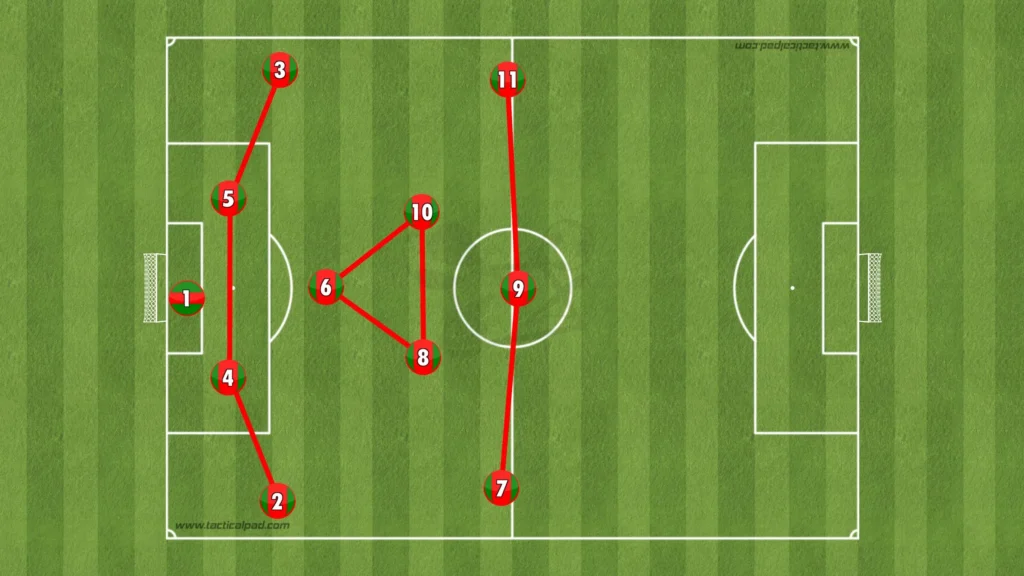
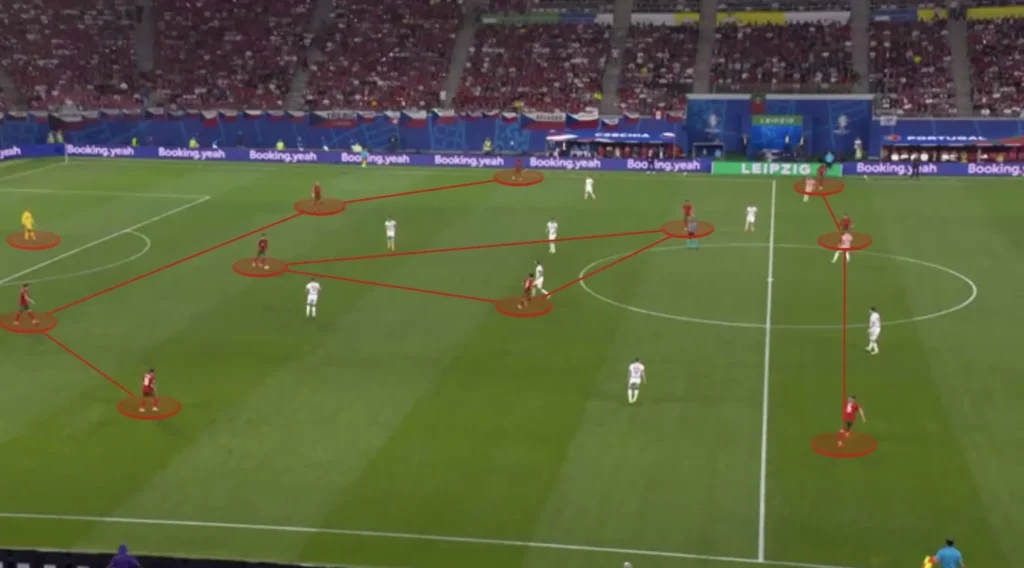
The number-eights often drop in the low build-up, trying to create numerical advantages, allowing Portugal to play through the press.
High Build-up
In the high build-up, Martinez changes the formation to a 1-3-2-5 formation, with a back three, two holding midfielders, and five up front.
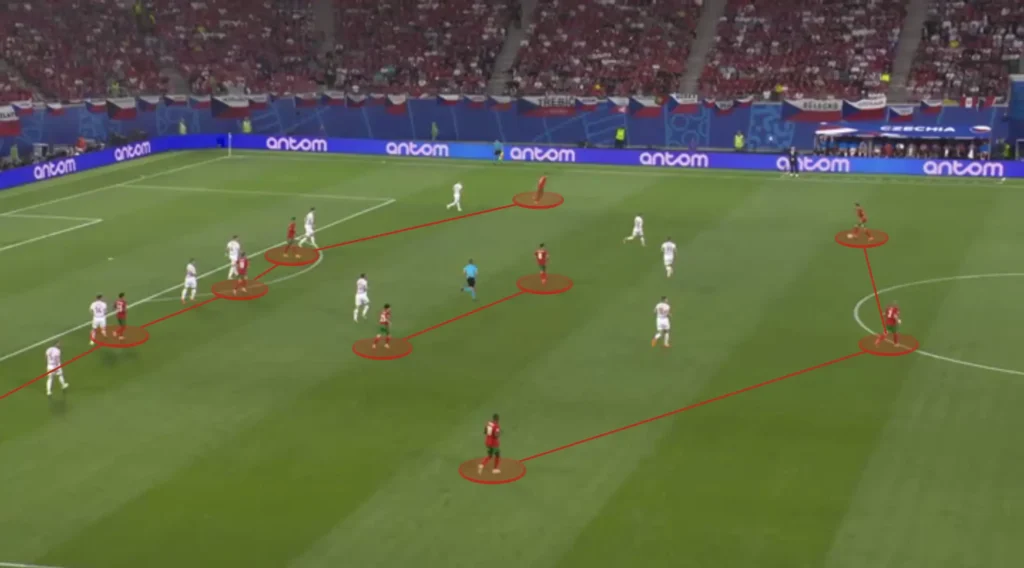
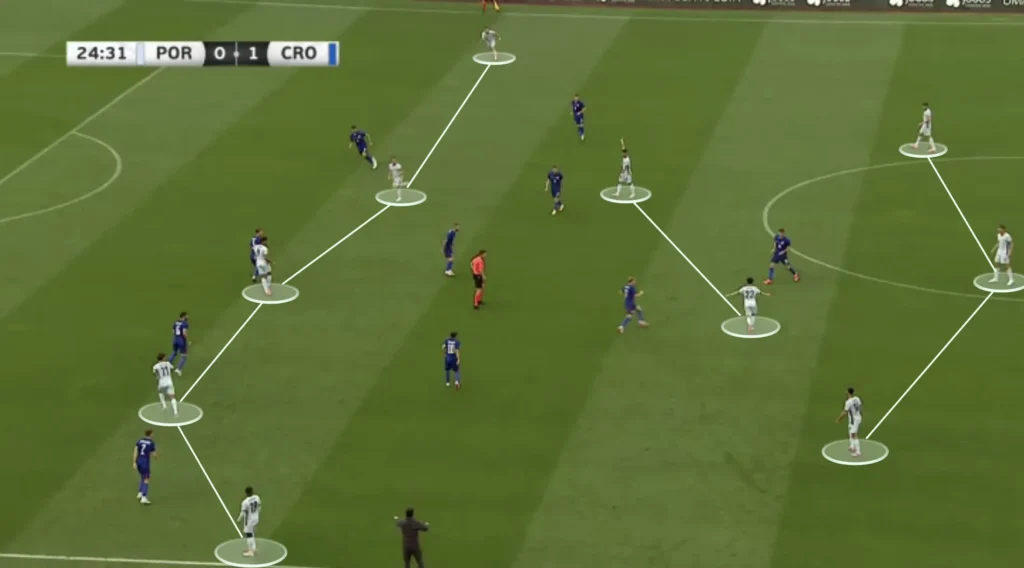
The two holding midfielders are rarely positioned in the same line. One will always be a little deeper, but who it is depends on where the ball is.
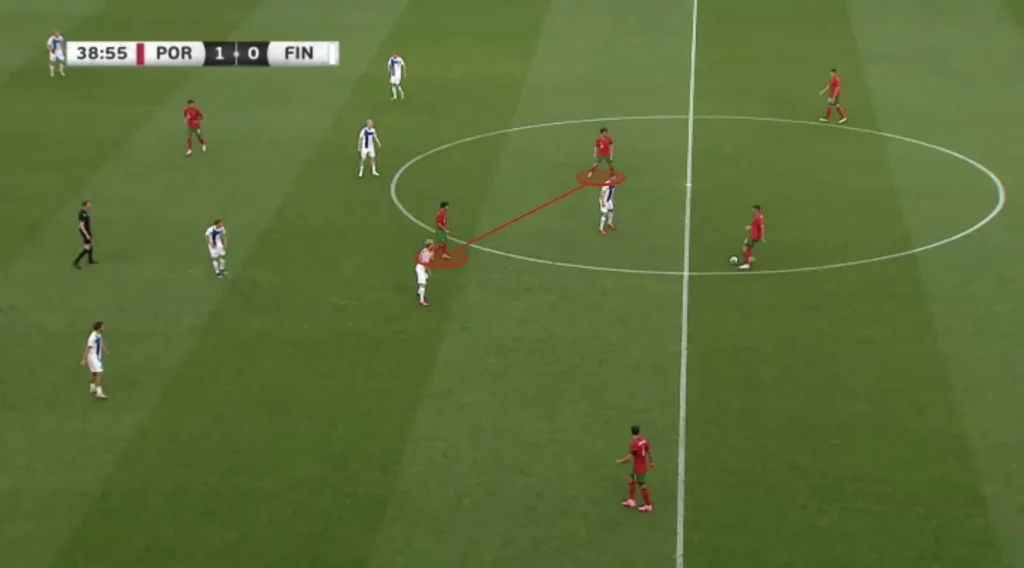
This allows the holding midfielders to play between themselves and opens up more potential passing combinations. They can also use one touch to play to the other midfielder instead of having to turn and use two or more.
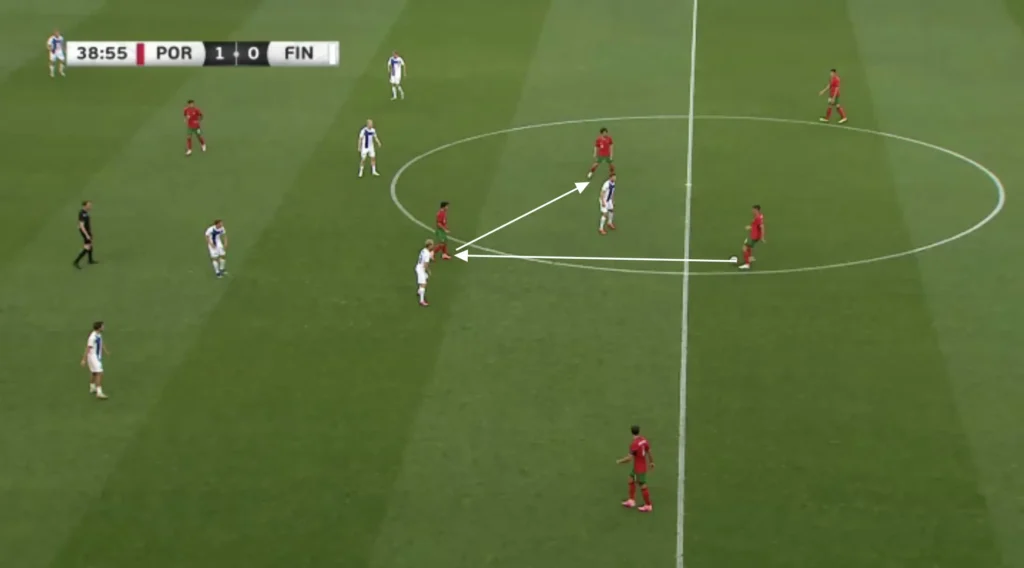
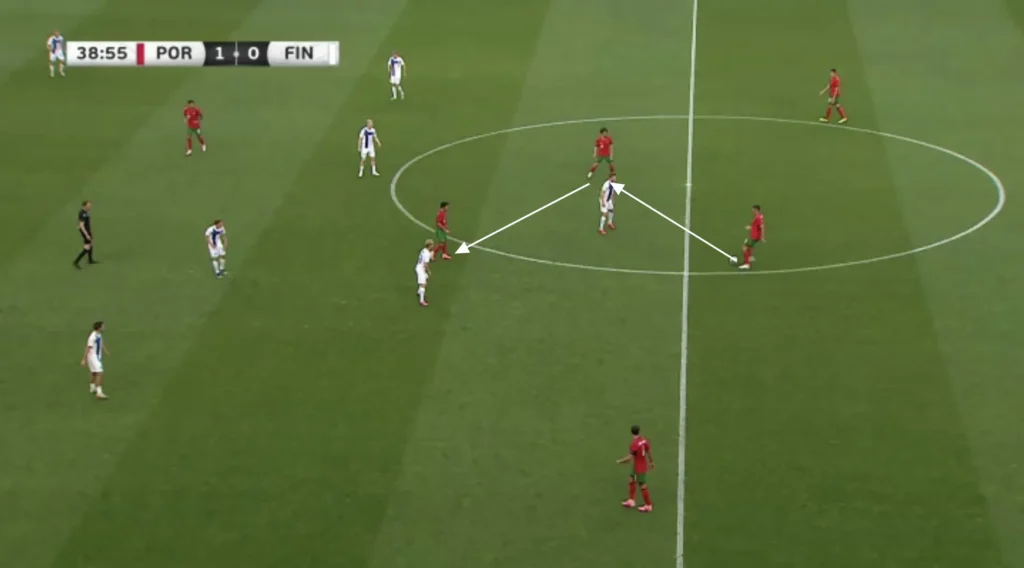
Having four central midfielders(two holding and two attacking) creates more options in the center and less space between the players. Martinez likes this because he prioritizes playing through the middle. He needs one player high and wide to pull apart the backline while the rest create numerical advantages in the midfield areas. This builds good conditions in defensive transitions, allowing more players to press when they lose the ball. Another purpose for keeping many players in the middle is to shorten the distance between them. This shortens the length of the passes, which naturally shortens the time between passes. This means the opposition players will have less time to push up and press, giving the Portugal players more time and control.
Rotations and Fluidity
Portugal’s fluidity in the build-up under Roberto Martinez has been a key aspect of their tactical evolution. The team often adopts a dynamic approach, shifting between formations to create numerical advantages and exploit spaces. Martinez emphasizes versatility, with players interchanging positions seamlessly to maintain possession and disrupt the opposition’s defensive structure. Fullbacks frequently push high up the pitch, while midfielders drop deep to facilitate ball progression. When an attacking midfielder drops, an opposition midfielder often follows, which opens space in the midfield for the holding midfielder to run into. This fluid movement enhances Portugal’s ability to control the game while opening up opportunities for incisive passes and creative plays, making them a formidable force in the build-up phase.
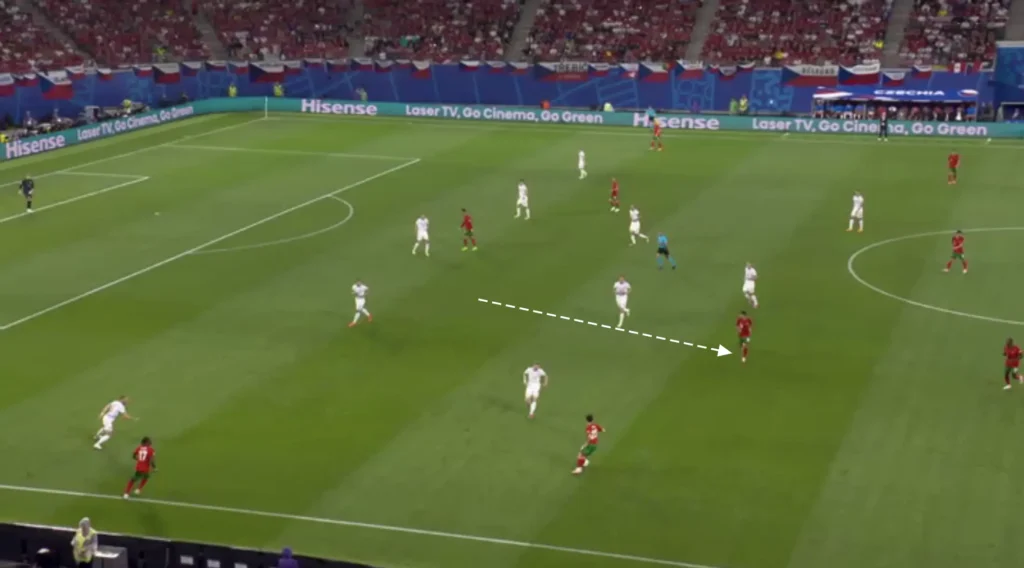
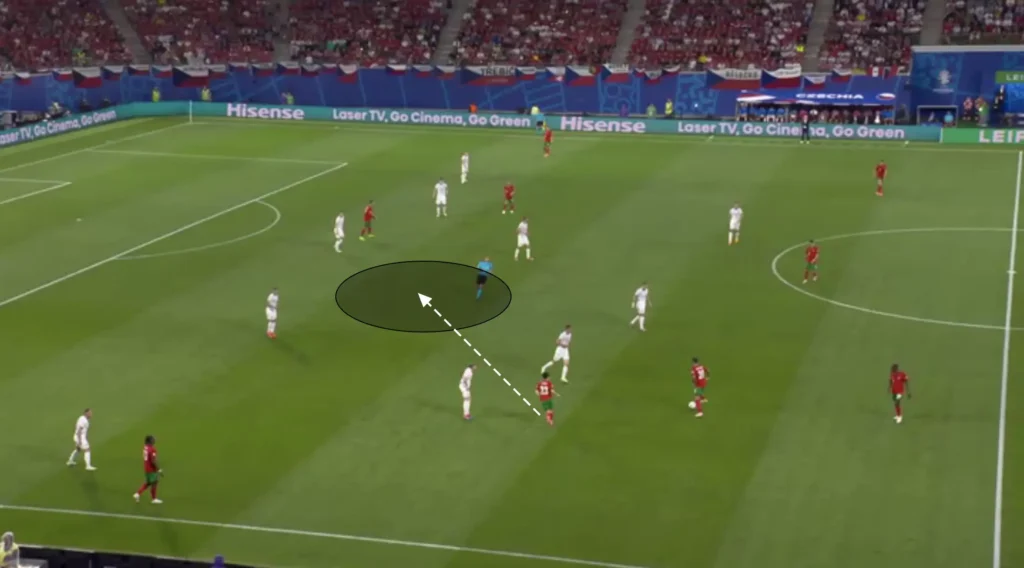
Even Cristiano Ronaldo will sometimes drop from his striker position to pick up the ball in the half-space and drive at the defense.
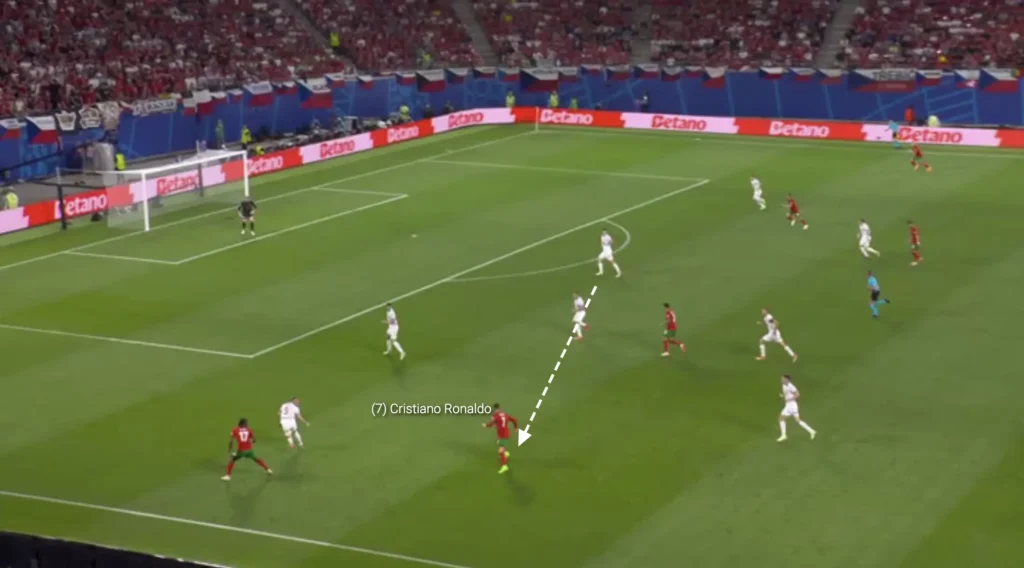
High Backline
A massive aspect of Martinez’s high possession build-up is they keep a high backline. This helps in the counterpress because they get closer to the center. Having more players close to the center who can win the ball back makes it difficult for the opposition to do anything when they win possession. Furthermore, the high backline shortens the distance between players, shortening the time and length of the passes and preventing the opposition from pushing up their defense.

Finding the Pockets
Martinez’s teams always try to find the attacking midfielders in the pockets. They will be positioned behind the opposition’s midfield and the midfield numerical superiority usually means that at least one will be open. The striker and wingers will be pinning the opposition backline, not allowing them to push up on the attacking midfielders when they receive the ball. Portugal will mainly look for straight passes from the backline or holding midfielders, breaking lines and finding these dangerous players who will turn and drive at the defense.
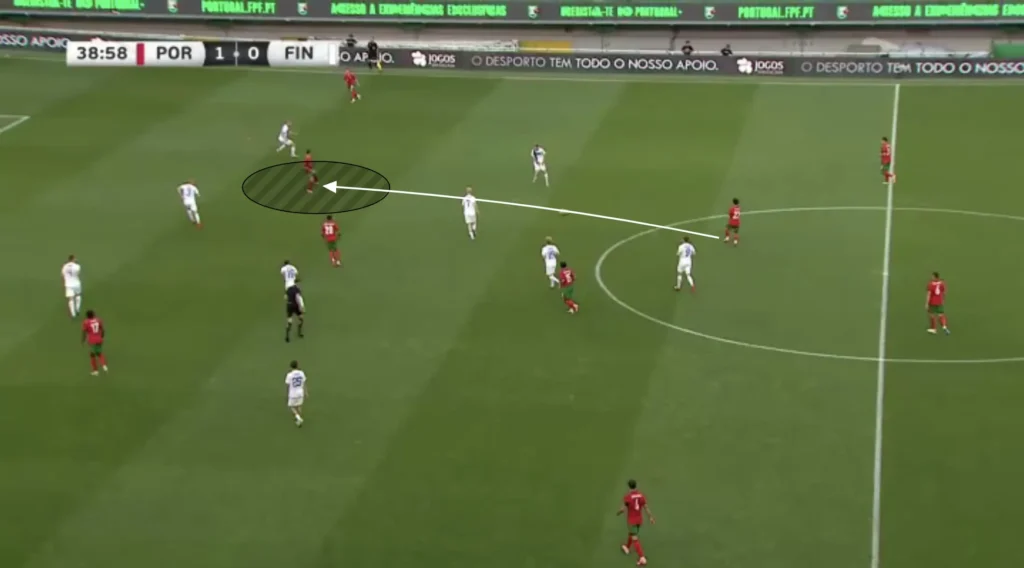
Numerical Advantages
Another massive aspect of Portugal’s high build-up is their ability to create numerical advantages against the opposition’s defensive line. Their front five naturally becomes numerically superior against a back four, which they are great at taking advantage of.
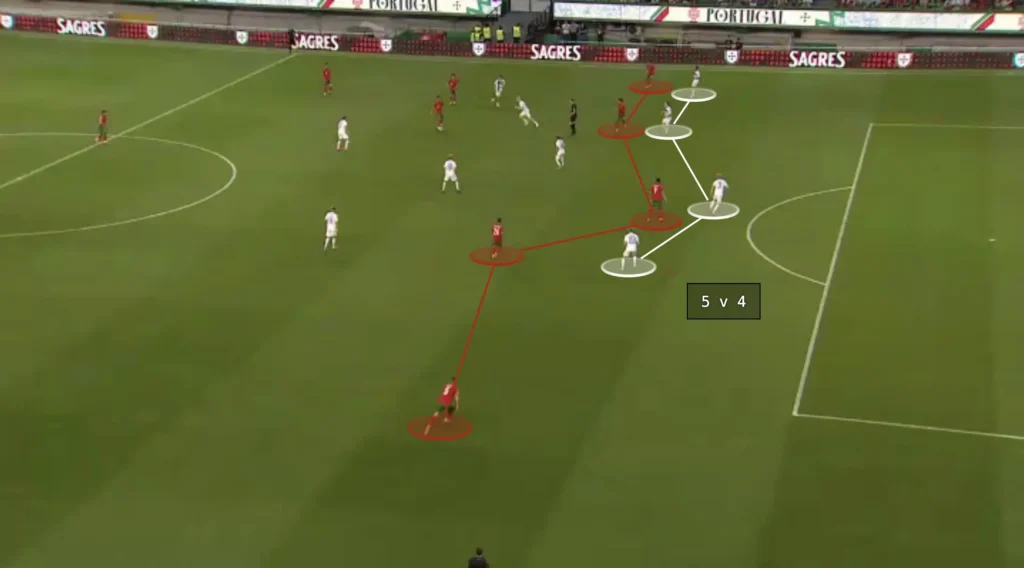
They mainly exploit this by creating 2v1 situations against the opposition fullback. When the defending team is positioned on one side, the weak-side fullback becomes vulnerable to the long switch of play due to the 1v2 against Portugal’s winger and attacking midfielder. The attacking midfielder will make a run towards the ball and if the fullback follows that run, the space for the winger in behind will be opened. Martinez’s team often capitalizes on this by getting the ball to the winger and creating many opportunities from 2v1 situations on the wing and in the half-spaces.
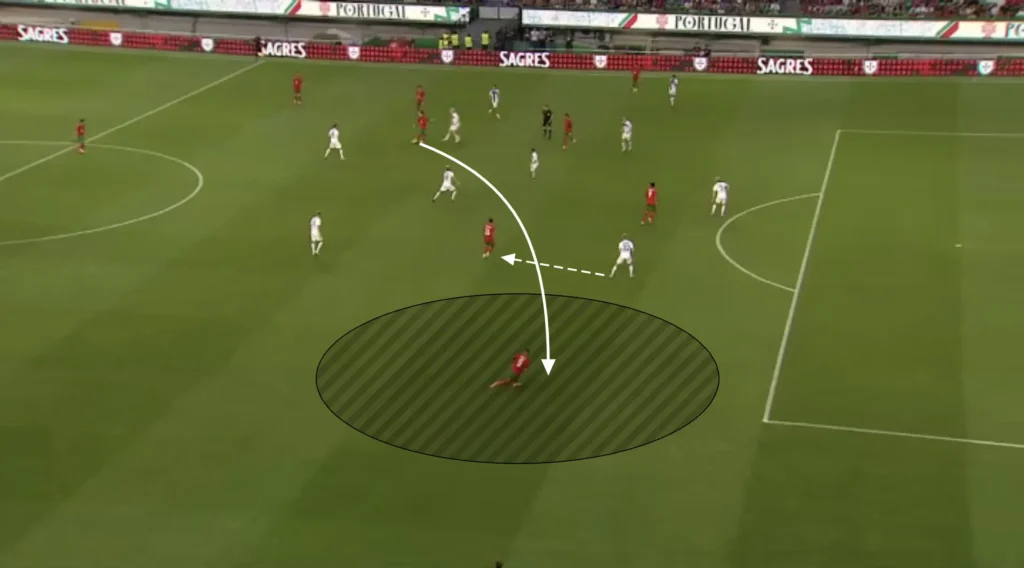
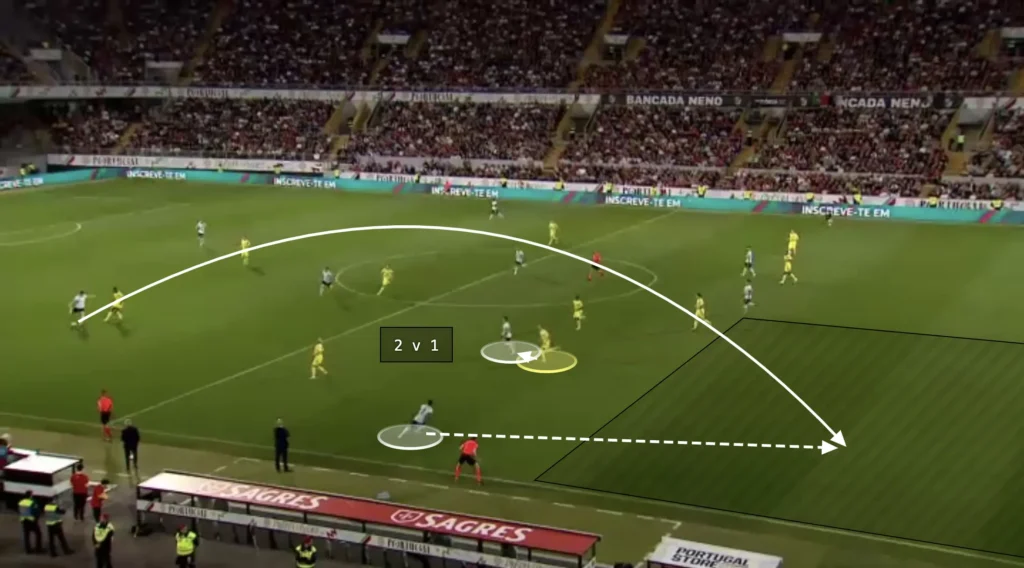
They can also exploit this space with runs from the striker.
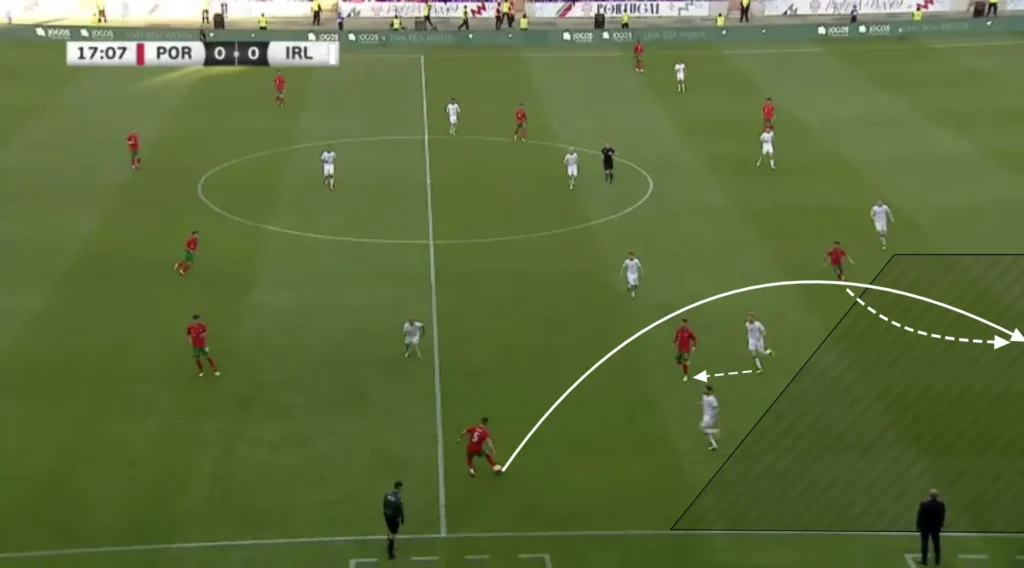
Final Third
Attacking the Half-Space
Martinez’s teams usually look to create chances by attacking the space between the opposition center-back and fullback. They primarily do this from the wide areas with underlaps from the attacking midfielders. When the winger receives the ball he will attract the opposition fullback. This opens the space between the fullback and the center-back, which allows the Portugal attacking midfielder to make the underlapping run into this space. The ball can be played to the underlapping player, who can cross the ball into the box or attack his defender in a 1v1 situation.
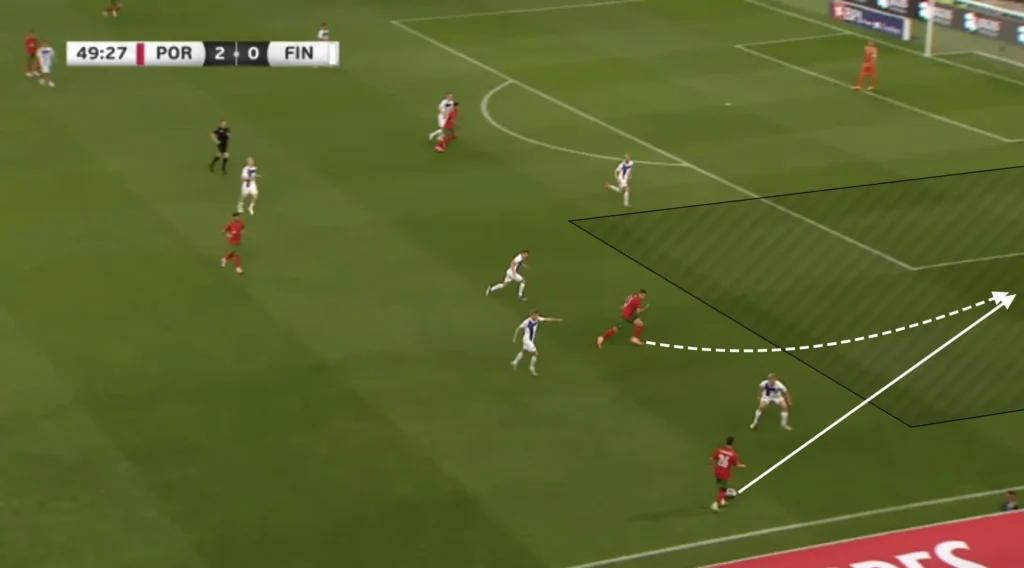
The winger does not have to play the ball to the underlapping player. The run from the attacking midfielder will often drag away an opposition defensive midfielder, which opens the space inside. The winger can take the ball inside and shoot or find a pass to a free player in front of the backline.
Martinez’s team also exploits the space between the center-back and the fullback by playing through-balls from the midfield or backline into a run from an attacking midfielder.
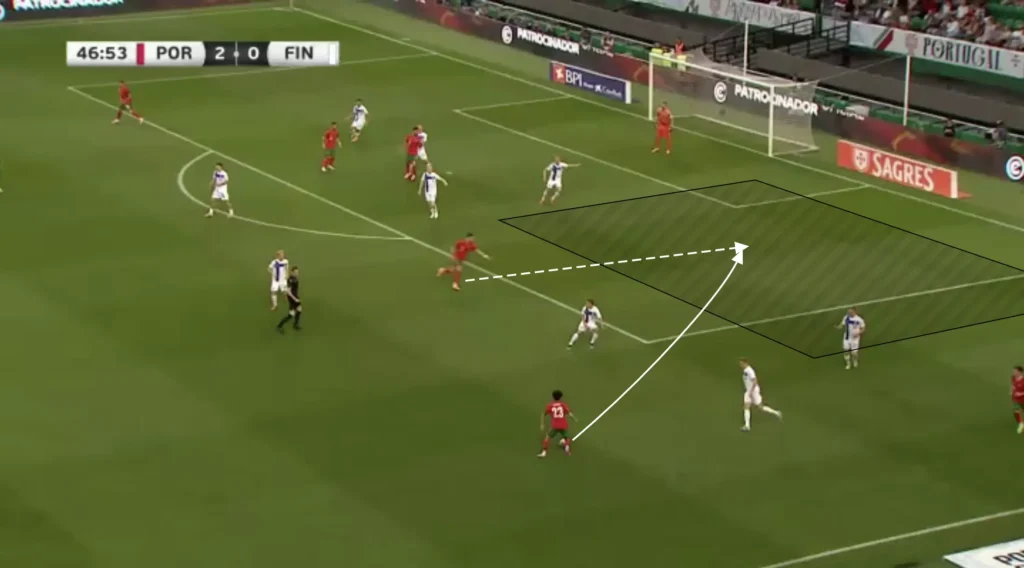
Many Players in the Box
The attacking midfielders and wingers look to make runs into the box when the ball is in the final third, often getting four or five players into these areas to create overloads. The numerical advantages in the box force the defending team to make decisions and leave some players open.
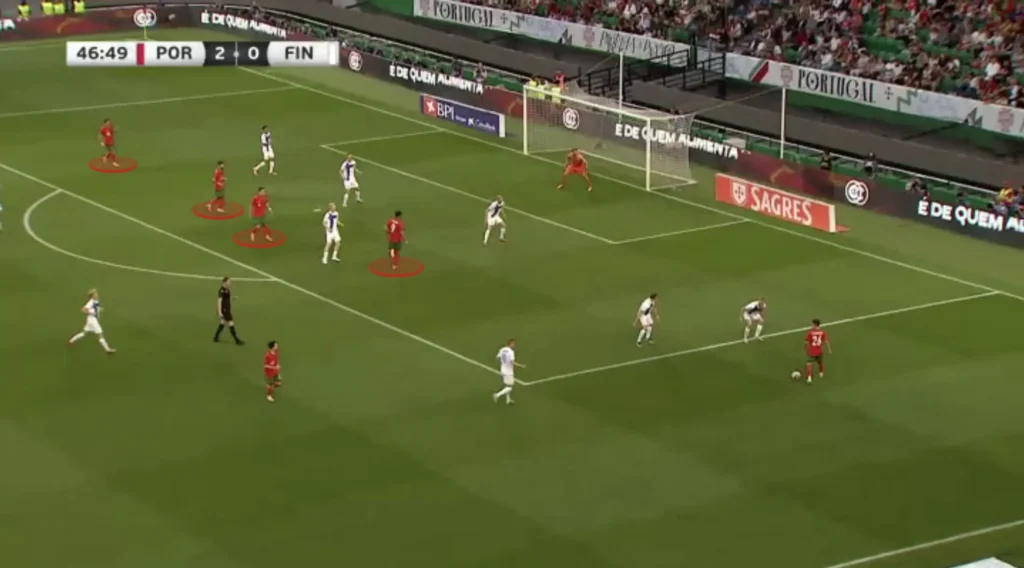
Martinez also positions many players outside the box, ready for the second balls and cut-backs. They always succeed in pushing down the opposition’s defense, which opens the space in front of the backline. The midfielders will often be found in these spaces with cut-backs, and from there, they can shoot or combine with an attacker to create goalscoring opportunities.
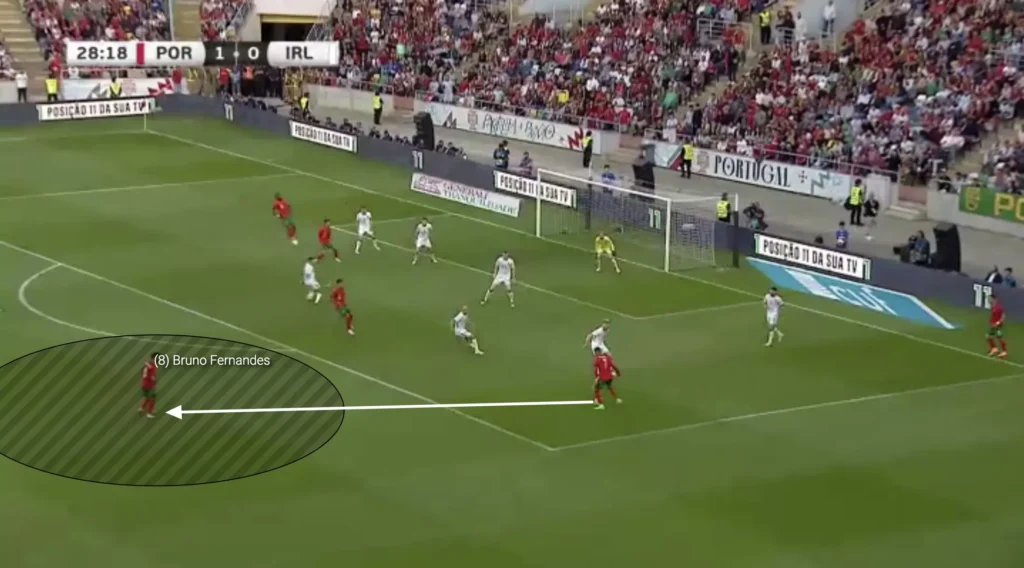
Defending
High Press
Martinez places much value on being aggressive without the ball. This shows in Portugal’s high pressure. Martinez usually wants his team to go man-to-man and intensely press the opposition. They almost use their high press as an attacking threat, scoring many goals from winning the ball in their high press.
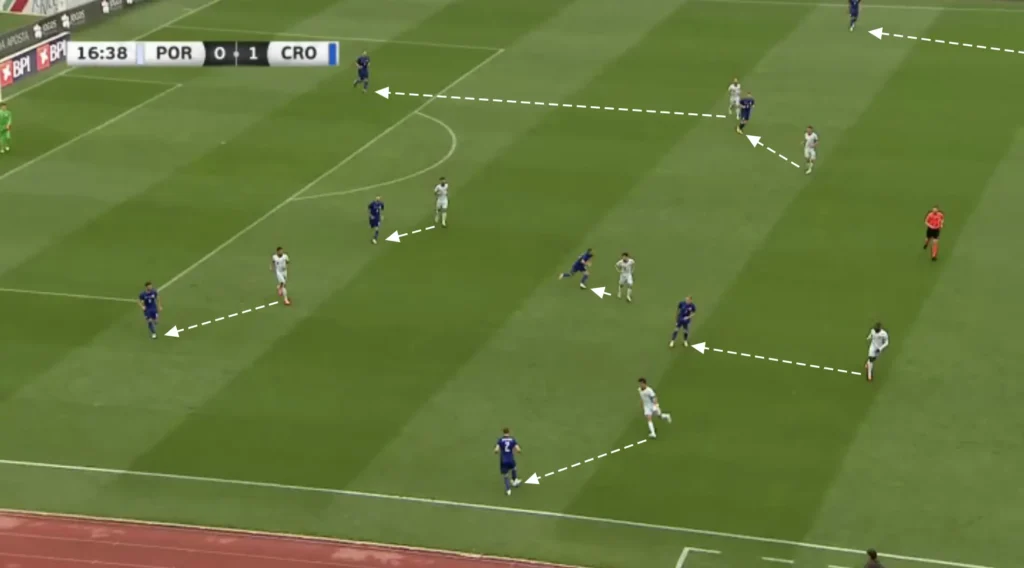
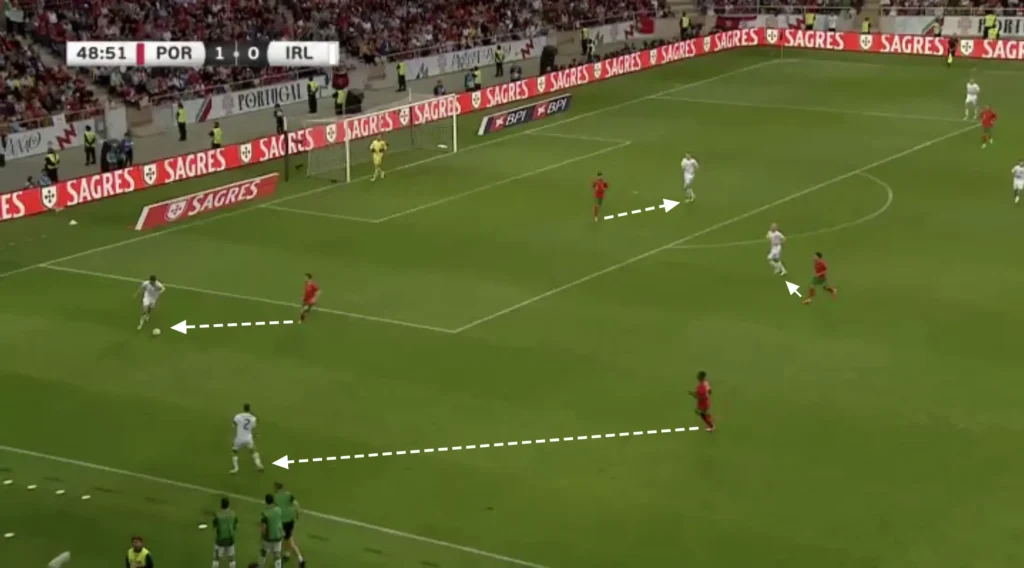
Low Press
Martinez’s Portugal uses a 1-5-4-1 formation in the low press. They look to set up in a mid-block, always trying to close the center, forcing the opposition out wide. Portugal try to stay compact without dropping too low, mainly closing the space between the midfield and backline.
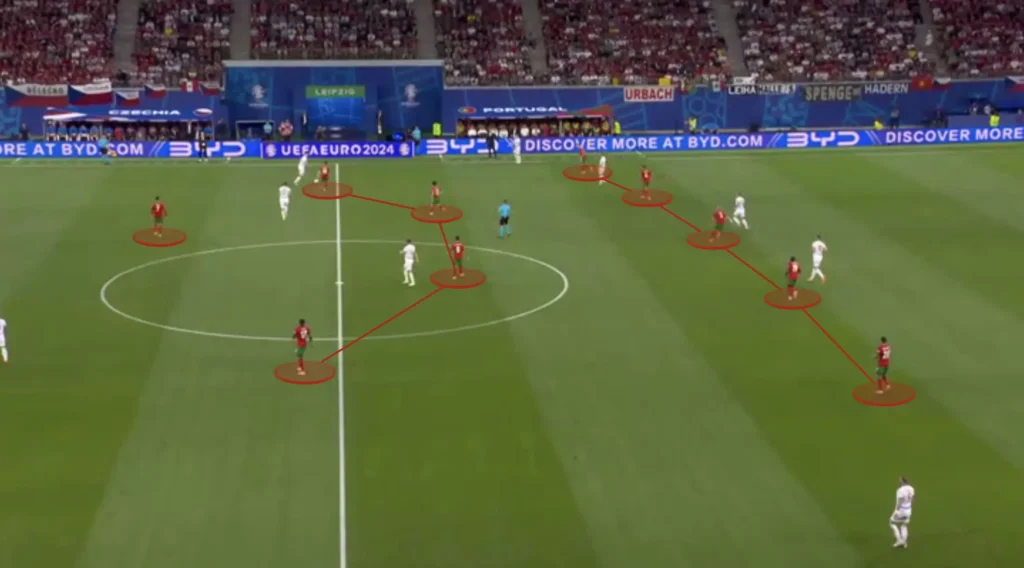

Martinez always wants his team to squeeze the pitch when defending. This means constantly pushing the team up as much as possible. Every time the opponent plays a slow, sideways pass or a back pass, Portugal’s first line of pressure pushes up, with the rest of the team following to stay compact. When the next pass comes, they push up even more, forcing the opponent back even more. They do this because it pushes the opponent further away from the Portugal goal, making it harder to create chances.
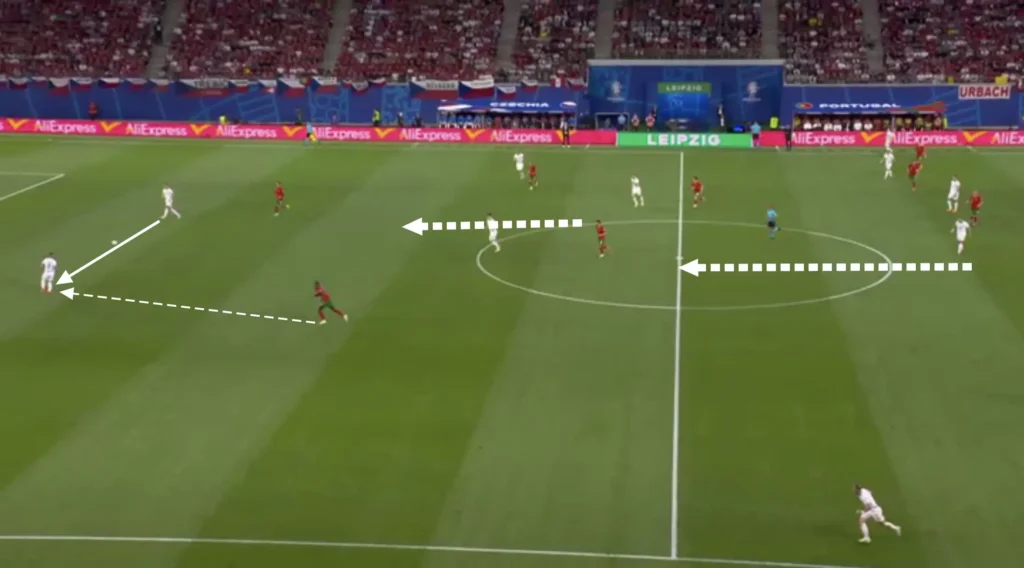
Defensive Transitions
Positioning many players centrally, creating a numerical advantage in the midfield, creates good conditions in defensive transitions. Many players close to the ball after losing possession means that many players can work towards regaining possession. Martinez’s players are also very aggressive in the first seconds after losing the ball. The four or five players closest will immediately jump on the opposition player with the ball and close the distance to cut off any passing lanes. Martinez’s team, therefore, often regains possession directly after losing it. When they regain possession, they try to recycle the ball, not wanting to lose possession again.
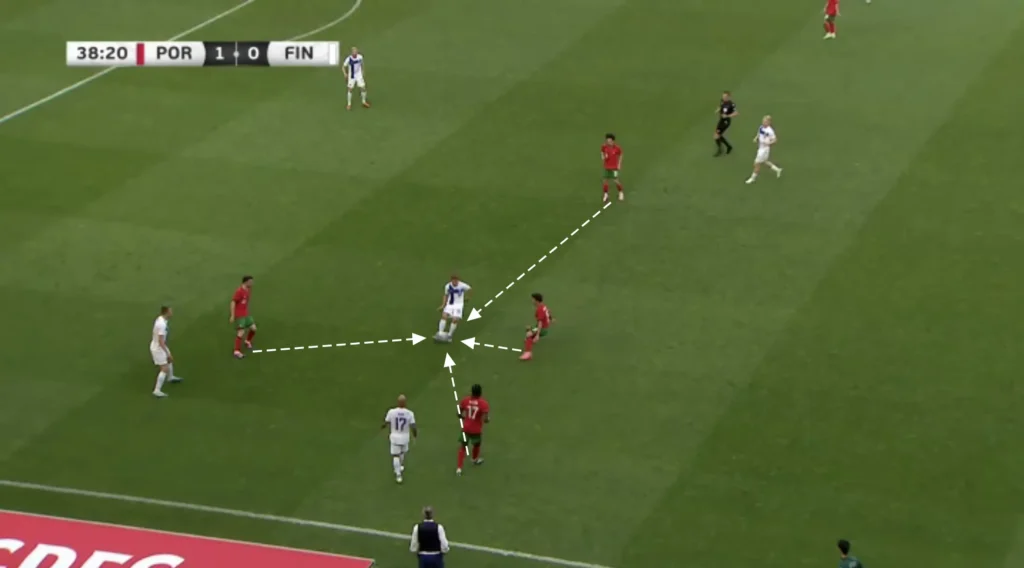
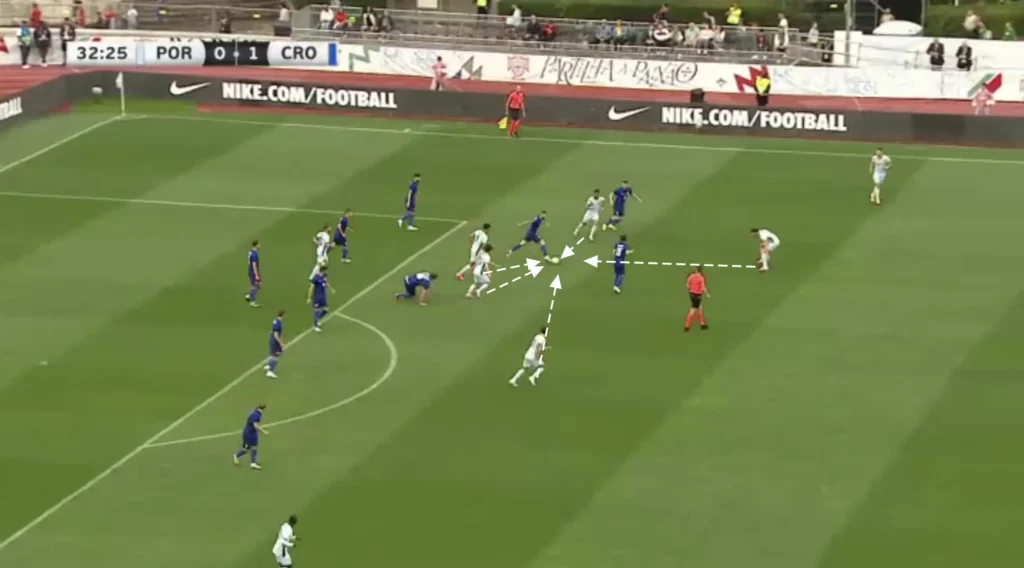
Final Thoughts
In conclusion, Roberto Martinez’s influence on the Portugal national team is evident through his innovative tactical strategies and adaptable formations. This analysis has highlighted how Martinez’s approach blends Portugal’s traditional strengths with modern footballing tactics, fostering a team that is both resilient in defense and creative in attack. By emphasizing fluidity and player versatility, Martinez has successfully utilized the wealth of talent at his disposal to create a cohesive and dynamic unit.
As Portugal continues to develop under Martinez’s guidance, the tactical adjustments and strategic insights discussed in this analysis underscore the potential for sustained success on the international stage. Fans and analysts can look forward to witnessing a well-organized and tactically astute Portugal, capable of competing at the highest levels and challenging for major honors in the coming years.
